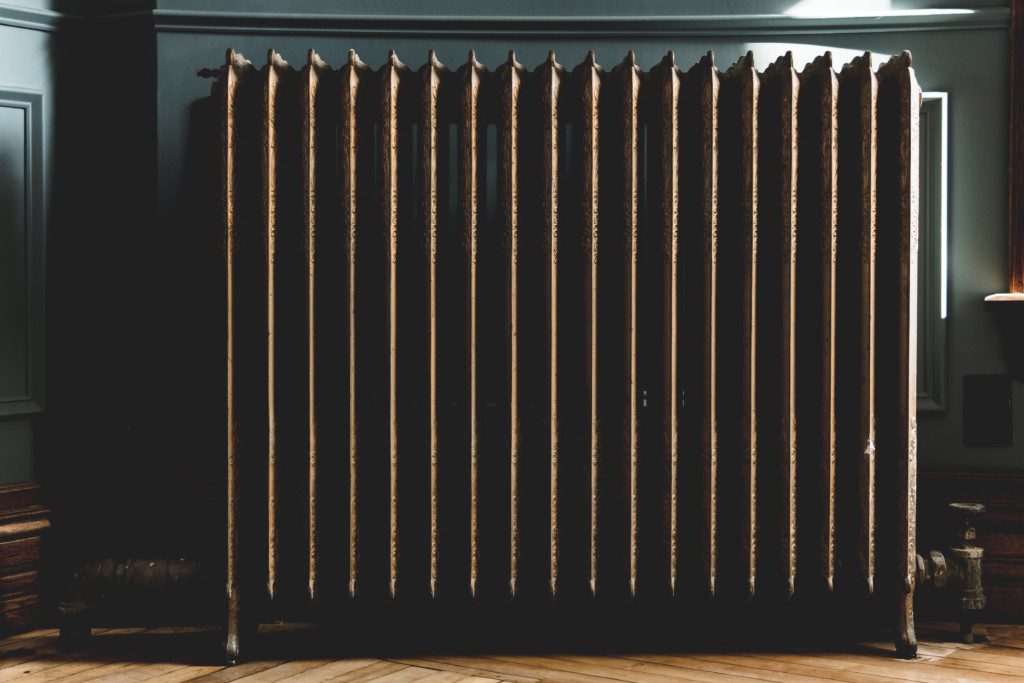01/07/2020 | Industrial Water Treatment | 9 MINUTE READ
How Does a Geothermal Heat Pump Work?

A geothermal heat pump is a kind of central heating or cooling system that is able to transfer heat directly to and from the ground. There are many different types of geothermal heat pumps that can be used by a home or business, all of which are designed to provide clean and quiet heating and/or cooling. These systems use the earth as their main heat source, which is surprisingly efficient. Deep enough under the ground, the temperature of the earth is around 50-60 degrees Fahrenheit at all times, which is true even if the temperature outside is below freezing.
Because of how these units work, you may be required to control the water flow to make sure the system is running efficiently, which can be done with the FM001 water flow regulator. The heating process also uses fluid that circulates throughout the system, which is why you may also want to test the water to make sure that it remains clean and free from impurities, which can be done with electrical conductivity sensors and dissolved oxygen sensors.
Geothermal heat pumps are important because they are highly efficient, good for the environment, and are able to lower operational costs significantly compared to standard heating and cooling systems. This article offers a thorough guide to how a geothermal heat pump works and why this type of heating and cooling system may be right for you.
Geothermal Heat Pump Basics

A geothermal pump is a heating and cooling system that’s powered by electricity and is designed to transfer heat from the earth to your home via fluid that’s sent through lengthy loops of pipes that have been placed underground. Since the temperature underground always ranges between 45-75 degree Fahrenheit, you can be confident that you will receive proper heating or warm water for your home even in the coldest days of winter. Because of how geothermal heat pumps work, they are considerably more efficient than standard heating and cooling systems.
How Do They Work & Why’d You Want One

While geothermal heat pumps may sound complicated, their operation is relatively straightforward no matter the type of heat pump you obtain. The actual heat pump is housed indoors, which uses a standard refrigeration cycle with the pipes that have been placed underground. This cycle includes evaporation, compression, evaporation of the liquid, and expansion. The looping pipes that are connected to the heat pump are used to capture and disperse heat from the ground in order to keep the home cool during the summer or warm throughout the winter.
You might want one of these heat pumps for your home because of how well they work in comparison to some other types of heating and cooling systems. For one, it’s possible that your monthly heating and cooling bills will be reduced by anywhere from 25-70 percent. The loud fans and compressors that are used in standard HVAC units aren’t housed in geothermal heat pumps, which should significantly reduce the noise the system creates.
If you’ve been searching for ways to help the environment, these systems also produce much less greenhouse gas emissions, which means that you can do your part to help the environment while also saving money on your heating and cooling bills.
Types of Geothermal Heat Pump Systems

If you’re considering using a geothermal heat pump to provide heating and cooling to your home or business, there are many different types of heat pump systems that you can purchase, which include the following:
While each type of system provides similar heating, they all work differently, which is why it’s important to know the differences.
Closed-Loop Systems
A closed-loop system is designed to circulate a kind of antifreeze solution directly through a closed loop, which is typically made from lightweight plastic tubing. This loop can either be placed underwater or buried deep in the ground. The system is also comprised of a heat exchanger that transfers the heat between the antifreeze solution that’s held in the closed loop and the refrigerant that’s located in the heat pump. The loop that’s contained within this system can have several different configurations, which include the pond/lake, horizontal, and vertical configurations.
While a heat exchanger is almost always used with a closed-loop system, certain variants will send the refrigerant through durable copper tubing, which works best with soils that are moist. However, it’s important that the copper tubing isn’t paired with a soil that could cause corrosion with the copper tubing. You should also make sure that there are no local environmental regulations that prohibit the use of copper tubing in these scenarios.
Horizontal
A horizontal system is considered to be very cost-effective when used in a residential home, which makes it a beneficial system for homeowners. This type of system requires that the trenches made for the system are four feet deep at least. There are two layouts with this system, both of which use two pipes.
The only difference is in how the pipes are configured. The pipes can also be looped together to reduce installation costs, which allows for a shallower trench. If you want to cut costs when purchasing a geothermal heat pump, you might want to consider the horizontal variant.
Vertical
A vertical system is a type of geothermal heat pump that’s commonly used at schools and large commercial buildings that don’t have enough land for a horizontal system. Vertical loops are used when the ground is too shallow to dig a trench. Because of how these systems are installed, there is minimal damage done to the surrounding landscape.
Vertical systems also use two pipes, which are typically kept around 20 feet apart from one another. The pipes are sent anywhere from 100-450 feet deep into the ground. The two pipes are connected at the bottom with a U-bend that allows for the transfer of heat to the building.
Pond/Lake
A pond/lake system is used when the site for the geothermal heat pump is comprised of a sizable body of water. A standard supply line pipe will be placed underground and will extend from the body of water to the building that’s being heated. This pipe will also be coiled around eight feet underground in order for it to avoid becoming frozen. While an open-looped system is typically preferable, a pond/lake system could be less expensive in some situations.
Open-Loop System
An open-loop system typically uses well water as the main fluid for the heat exchange process, which circulates throughout the entire system. After it has circulated, the water will return to the ground via surface discharge, a recharge well, or a standard well.
With this type of system, a chief concern when managing it is to make sure that you use clean water. The presence of dirt and other harmful particles may eventually cause scale to build up within the pipes, which may lessen the efficiency of the pipes or cause the opening of the pipe to become blocked.
Hybrid System
A hybrid system is similar to a closed-loop geothermal system with the main difference being that a hybrid system is typically paired with a boiler or cooling tower, which helps to reduce the amount of piping that’s needed for the system.
As such, hybrid systems usually come with lower installation costs when compared to other geothermal heat pumps. The boiler or cooling tower will provide some auxiliary heating or cooling to the ground water for better efficiency.
Applications of Geothermal Heat Pumps

Geothermal heat pumps can be used for the heating needs of practically any building or home. If you’re searching for an efficient system that doesn’t waste energy, a geothermal heat pump may be a good way for you to heat and/or cool your home. The types of buildings that geothermal heat pumps can be used in include small residential homes, schools, office buildings, shopping centers, government buildings, manufacturing facilities, and facilities that use cooling towers.
The main applications of geothermal heat pumps include:
- Standard heating and cooling
- Water heating for pools
- Ducted forced-air systems
- Hydronic radiant floor
- Residential hot water
There are many Sensorex products that can be used to aid the efficient operation of your geothermal heat pump. If the system that you purchase requires a specific flow rate of water, you can use the FM001 Flow Regulator available through Sensorex to control the flow of water in the piping. In the event that the system of your choice requires a significant amount of water to operate, it’s highly recommended that you regularly test to source water to make sure that it’s clean and free from any damaging impurities.
For instance, mineral deposits and hardened calcium can lead to the development of scale, which can cause significant damage to your piping. At worst, the scale buildup can block the opening of the pipe. At best, your system will become less efficient than it should be.
There are a wide range of Sensorex products that can be used in combination with a geothermal heat pump. For instance, clean water comes with a relatively low electrical conductivity reading, which means that you can use one of our many conductivity sensors to test the water. You can also use pH sensors and dissolved oxygen sensors to determine if the water is as clean as it should be.
Understanding Geothermal Heat Pumps

If you want to significantly reduce your monthly heating bills by anywhere from 25-70 percent, geothermal heat pumps may be the ideal method of heating and cooling your home. These systems come without noisy compressors, which can make for a more relaxing home. A geothermal heat pump is also much better for the environment than the alternatives and will produced less greenhouse emissions. While the upfront costs may be high, your long-term savings should substantially outweigh these initial costs.
It’s also important to know the differences between the various types of geothermal heat pumps in order to be confident about selecting the right heat pump for your situation. Here at Sensorex, we offer many fantastic sensors and flow controllers that can help you maintain your geothermal heat pump and keep it operating at peak efficiency.
Contact us today to learn more about the products that we offer.
Posted by Sensorex on January 7, 2020
Sensorex is a global leader in the design and manufacture of quality sensors for water quality and process applications. The company offers more than 2000 sensor packages for pH, ORP, conductivity, dissolved oxygen, free chlorine, chlorine dioxide, UV transmittance and other specialty measurements, as well as a full line of sensor accessories and transmitters. Its expert technical support engineers solve analytical sensor challenges with custom designs and off the shelf products.





